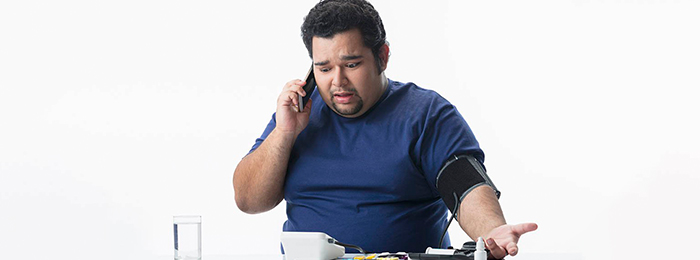They are the largest group of healthcare workers in the world. They play a pivotal role in patient care, witness health impacts of diseases, deliver highly specialized services and provide the most important link in healthcare delivery. Yet their potential, expertise and experience are hardly recognized. They are left out of policy development, denied a voice in hospital planning, lack representation in decision making and leadership rewards.
They are our nurses. And to celebrate World Diabetes Day this year, the International Diabetes Federation has chosen them as the theme of the world’s largest diabetes awareness campaign: “The Nurse and Diabetes”. Nurses are actively involved in prevention and early detection of diabetes and its complications. With diabetes rising across the world, the aim is to raise awareness about the crucial role nurses play in managing diabetes, self-care and improving the quality of life.
Nurses on the frontline
There is a growing change in the way the world views nurses. Even before Covid-19 swept the world, the World Health Organization (WHO) dedicated the year 2020 to nurses: “Year of the Nurse and Midwife.” It chose the theme to coincide with the 200th birth anniversary of Florence Nightingale, “The Lady With the Lamp” with whom modern nursing began, and raise the profile of the profession.
The pandemic has brought nurses to the forefront of people’s minds. On the frontline of the coronavirus pandemic, nurses are carrying on the legacy of Nightingale. In the risk zone, overwhelmed by work pressure, often without adequate protection, rest or support, sacrificing life—they have validated what it means to serve no matter the circumstances.
India’s problem with nurses
In India, the first formal training of nurses began in 1871. Streamlined by several policy initiatives in independent India, such as the Bhore and the Kartar Singh committees, nurses form the backbone of the health system representing 30.5 percent of all health workers, shows 2016 WHO report. Yet, even with three million registered nurses, shortages occur at every level of the healthcare system. India has 1.7 nurses per 1,000 population, 43 percent less than the WHO norm (3 per 1,000).
Migration remains an issue. Many wealthier countries don’t produce enough nurses to meet their own needs: 80 percent of the world’s nurses serve 50 percent of the world’s population, said the WHO chief Tedros Adhanom Ghebreyesus in a statement this year. Philippines and India “supply the world with nurses.” With job insecurity, exploitative job contracts, recruitment outsourcing, low pay in both the government and private sectors, lack of career progression, job satisfaction and infrastructure facilities, nurse retention is a top challenge.
Nursing curriculum and diabetes
Diabetes is rising exponentially in India. The WHO projects, the number of people with diabetes in India will reach 79 million by 2030. Adults who are diagnosed with diabetes have a 3.5 times higher risk of being hospitalized than are those without a history of diabetes, while those with pre-diabetes are 1.3 times more likely to be hospitalized, report Schneider and Kalyani (Diabetes Care, 2016). They also spend longer in the hospital.
Yet, there is little focus on diabetes in the nursing curriculum in India. The training currently focuses on general nursing duties, without deep understanding of widespread chronic diseases, including diabetes. The most common way to improve knowledge about the disease among nurses is by reading books, interacting with patients, asking senior nurses, doctors, clinical instructors or attending classes and seminars, reports a 2015 interview study conducted in India by researchers from the Swedish Karlstads universitet.
In a recent assessment of diabetes knowledge among nursing students by Drs Shilpashree YD and Namitha D (International Journal of Applied Research 2018), none of them could answer all the questions correctly. Their knowledge about symptoms, when compared to complications of the disease, was found to be “very low,” as was their understanding of the management of diabetes. In response to the question examining their perception of diabetes, around 50 per cent said it is “curable.”
Nurses wear many hats in diabetes care
Here is a review of the changing systems of nursing in diabetes clinics around the world:
Nurses as leaders:
The UK allows skilled Diabetes Specialist Nurses (DSN) to conduct several roles, such as, prescribe medicines, carry out physical examinations and treatments, be involved at various levels as a team leader, make sure that treatment and care are based on best practice. DSNs in Sweden and the Netherlands often work in community settings and have prescribing rights. In contrast, DSNs in Ireland are hospital-based and not all can prescribe. According to the American Nursing Association, advanced nurse practitioners play a pivotal role: they can assess, diagnose, manage, advise and engage in continuous education to remain ahead of developments in the field.
Nurses as teachers:
In a study by Bostrom et al. (2012) DSNs in northern Sweden were greatly involved in educating patients to manage their diabetes, as “teachers”: educating patients about their new disease situation, informing them about the disease, its complications and test results. The glucose levels were found to be lower, with significant reduction in glycosylated hemoglobin (HbA1c).
Nurses as collaborators
From the US to Australia, an essential role of DSNs is that of a doctor’s collaborator. Physicians trust them and often act on their assessments of patients, while nurses act as intermediaries between doctor and patient, brief doctors about complications or problems, help doctors in treatment recommendations, and advise doctors about medications. Nurses also organise and plan diabetes care between themselves, physicians, and other professionals.
Nurses as motivators
The Diabetes Attitudes, Wishes, and Needs (DAWN) study (2001-05)
conducted in 13 countries, including the US, highlights the importance of nurses in the psychological and psychosocial support of diabetic patients, in comparison with doctors. And that had a significant impact on self-care and control of patients with diabetes.
Wanted, specialist nurses for diabetes
The complex nature of diabetes necessitates the involvement of nurses in multiple roles. There is, however, no commonly accepted approach. In some countries they have major roles and responsibilities, in others the doctors dominate. The role of specialist and skilled nurses is a new development in diabetes management. There is strong evidence to show that nurses have a major effect in improving glycaemic controls when they are involved and teach patients on diabetes. Similarly, in rehabilitation, patients suffering from diabetic foot ulcers or amputation, nurses are the mainstay to note changes in skin sensation, to care, dress or apply novel technology.
Indian Nursing Council, the national regulatory body for nurses and nurse education in India, has been calling for postgraduate courses for training specialist nurse practitioners in critical care, between the patient, the physician, other medical professionals, and the family. In an appeal to the Union Ministry to Health, the Council has pointed out how specialist nurses have been trained and functioning in USA since the 1960s, in UK since the 1980s, in Australia since the 1990s and in The Netherlands since the 2010s.
It is, however, the coronavirus pandemic that has put the spotlight strongly on nurses and the vital roles they play. In fact, nurses are more important today than doctors: they are the ones at the bedside of patients, implementing treatment plans, constantly assessing patients, monitoring vital signs and lab results, alerting doctors to changes that require interventions. Nurses are not just the first line of defence, they are the first responders to critical care. It is time to tell the world what nurses do.




